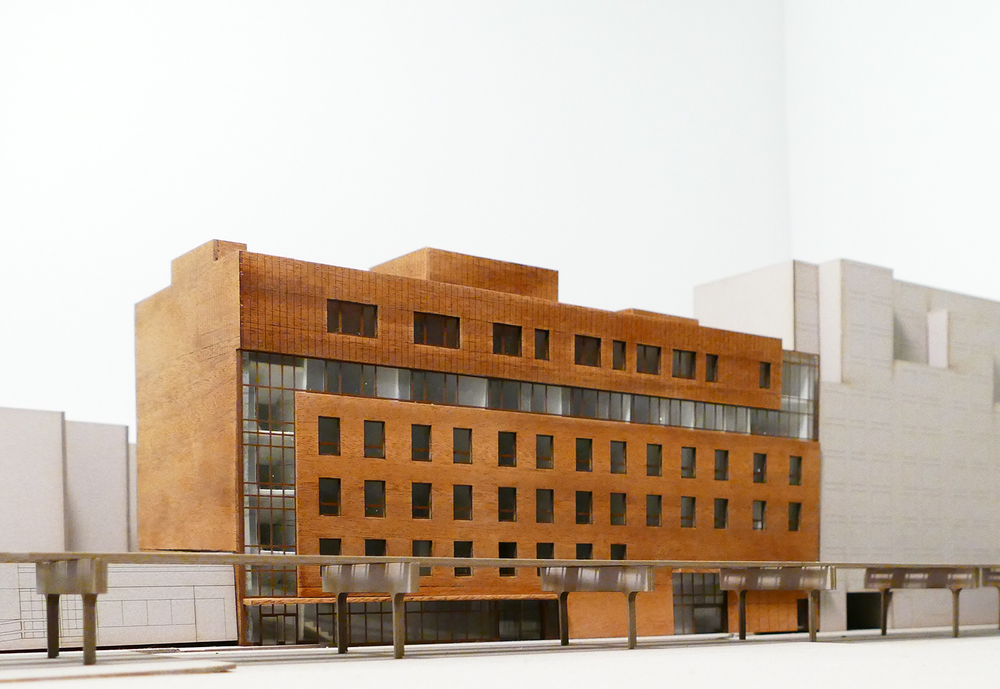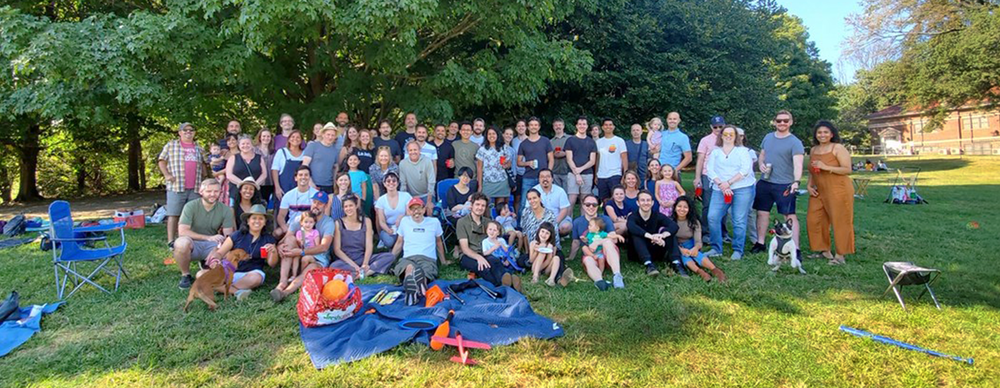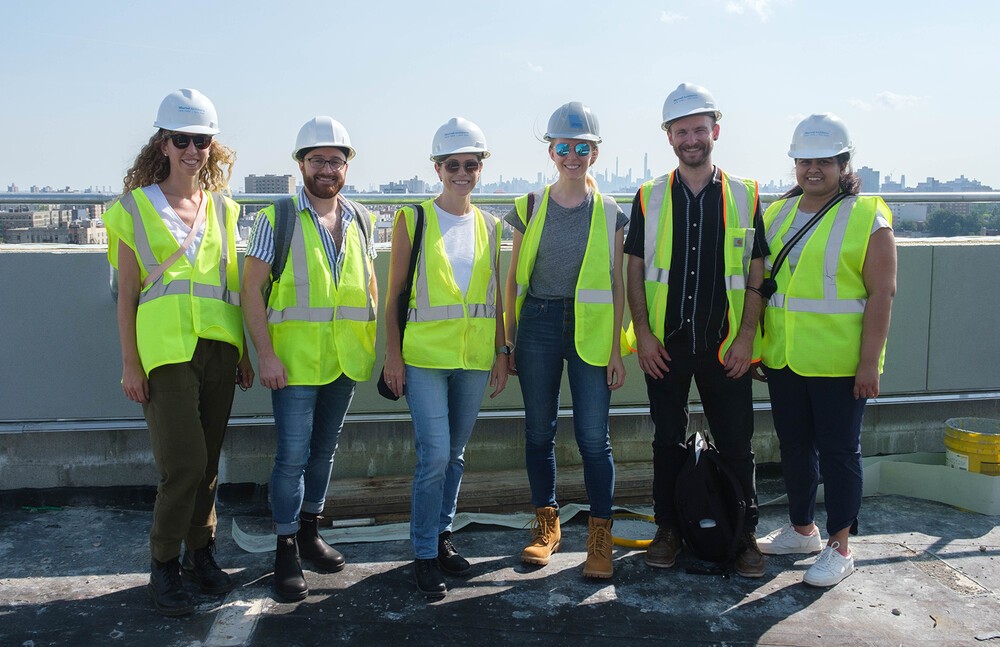Questions For A Designer: Emily Richards
A diverse array of backgrounds, experiences, and worldviews come together to shape Marvel’s designs across public and private spaces. This series aims to offer insight on the colleagues and teammates that are essential to Marvel’s success.
What brought you to Marvel?
I’ve known for a long time that I wanted to go into architecture. Fortunately, every step I took, from school to travel to first jobs, reinforced that belief. I grew up in Cleveland, but school really took me around. I received my Bachelor of Science in Architecture at the University of Virginia, which was an incredible experience. There’s a big pipeline of UVA graduates going to Washington D.C., so I followed suit and took a job in D.C. after graduation. It was a great first job, and I loved D.C., but knew it wasn’t a place I wanted to stay long term. I wound up applying to grad school a couple years later and went for my Master of Architecture at the University of Michigan before eventually moving to New York.
While I was in D.C. I ran across Marvel’s State Street Townhouses as part of a precedent study. I thought they presented a very compelling case for how to work with a classic New York building typology without pretending it’s a historic building. As I dug deeper into projects like St. Ann’s Warehouse and New Lab I was struck by Marvel’s uncommon ability to contextualize contemporary work. The office really has a way of making work that feels fresh, but pays attention to the neighborhood and situation that it’s in.
I’ve always had a soft spot for New York. This city has such an incredible concentration of firms and resources for architects. After grad school I reached out to Marvel and was able to connect with the office through one of our Directors. I was very excited to get the opportunity to practice here.

What projects have you worked on so far?
I’ve worked at Marvel for two and a half years and worked on about half a dozen projects in that time. My first project was a really unique opportunity to turn an old cardboard box factory into a multipurpose event space in Industry City. It was a really fabulous industrial space, so the team got to exercise a lot of creativity in its reuse. That project went on hold, so I worked for a while on Harvard University Housing and an office project at 2440 Fulton Street.
Then, in August of 2020, the KIPP NYC charter school landed on our doorstep, and I’ve been full-time on that project since. We spent around nine months on design before submitting our construction set. At that time I asked my project leaders to put me on construction administration for the building, and they worked to make it happen.
We started construction in July 2021 and are now about a quarter of the way through, which is exciting. I’m appreciative of KIPP because it’s given me exposure to every stage of the project very quickly. It’s important to see how everything plays out in the bigger picture, like why you draw things certain ways, and how what you design, and draw get built in the field., The staffing team tries to put designers, especially early-career designers, on projects from start to finish to take advantage of that knowledge.
While I like working on a project continuously, I also think it’s important to shake up your routine sometimes, so participating in design exercises, charrettes, and RFPs in between the longer projects can help round out the learning experience.

What is the Marvel team culture like?
Before the pandemic, the Marvel office was a very lively place. The in-person office culture is great and having events and extracurriculars like happy hours, sports teams, and even just coffee chats in the kitchen helps foster a feeling of community in the office. There are so many creative, talented, interesting people that you get to cross paths within the office. Having the opportunity to work remotely has been important as well, so to help fill in the gaps of in-person activities, we’ve had Zoom happy hours and virtual activities.

You’ve also been active in Marvel Metrics, a subsection of the IDEAL group. Can you give an overview of IDEAL, and how these groups help foster connection and growth within the office?
Broadly speaking, Marvel has a number of committees aimed at improving the community, technical, and social aspects of the office. I’m involved in the IDEAL (Inclusion, Diversity, and Equity in Architecture and Landscape) Group, Marvel’s response to the DEI efforts that are going on around the country. The IDEAL team’s goals are based on creating an environment of equity, diversity, inclusion, and justice within our office, through our design, and in the communities we serve.
There are four subgroups within IDEAL. Marvel Metrics, which focuses on evaluating who we are by the numbers. This group is really about self-analysis and reflection. Second is Education, which improves our outreach to different schools. Third is Community Engagement, which helps us connect to the communities we serve in meaningful ways. And fourth is Recruitment, which makes sure that we’re bringing in applicants with a diverse array of experiences in the office. These are efforts which have been important to the office for a long time, but having a formal group allows us space to reflect on how we’re doing and to set measurable goals for improvement.
While we’re always trying to improve, another goal of the IDEAL team is to recognize and celebrate the diversity that we do have. Something that makes a good architecture firm is having a lot of voices at the table.
How does your interest in architectural history and research help inform your design work?
I enjoy a lot of aspects of architecture, but I’m particularly interested in the history and social sides of practice. In high school, I interned at a local architecture firm and the most memorable moment was when the principal told me that “architecture is a social science.” I had never really heard it in those terms before, but that’s what I love the most about architecture. It’s understanding the way that the spaces we occupy both reflect and contribute to the lives that we live.
So, I think that idea really stuck with me through school. In addition to doing design work, I always tried to take classes in architecture theory, history, and other electives. Part of that comes from my genuine belief that you have to understand the context in which you’re operating, and the other part comes from the fact I genuinely love to learn about that side of the field.
What are you most looking forward to in 2022?
On a professional note, I am making progress on my licensure exams, so I’m looking forward to hopefully becoming licensed soon. I’m also very excited to watch KIPP come up, which will start happening very rapidly. The CA process is very gratifying. You experience your design decisions firsthand, and can use it as a learning experience for the next project. Seeing the physical manifestation of the thing you’ve been working on for a few years is really satisfying.

